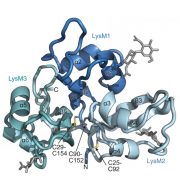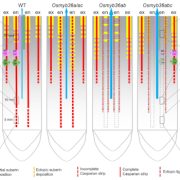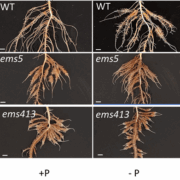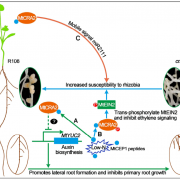The hidden architecture of symbiosis: Casparian strips in root and nodule integration
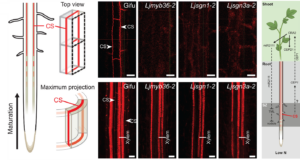 The Casparian strip (CS), a lignin-rich apoplastic barrier in the root endodermis, forms early in development and regulates solute flow between the soil and the vasculature. It allows plants to control ion uptake, defend against pathogens, and coordinate developmental signals. While its functions in these processes are well studied, its role in root nodule symbiosis has remained elusive. Recent findings by Defeng et al. reveal a strong link between CS formation and nodule development in Lotus japonicus. Mutants lacking key CS regulators (LjMYB36, LjSGN1, and LjSGN3) showed impaired lignin deposition, delayed barrier formation, and reduced nodule formation after inoculation with Mesorhizobium loti R7A. Notably, wild-type nodules contain an internal Casparian strip within their vascular endodermis, serving as a secondary barrier that regulates nutrient and signal exchange between the plant and symbiont. In CS-deficient nodules, this internal barrier was absent, leading to ion imbalances (notably sodium, potassium, molybdenum, and phosphorus). These mutants also failed to produce LjCEP1, a shoot-directed peptide induced under nitrogen starvation. Without LjCEP1, the shoot could not suppress LjTML (TOO MUCH LOVE), a negative regulator of nodulation, further impairing nodule formation. Together, these results redefine the Casparian strip as a dynamic regulator of symbiotic coordination and metabolic exchange. These findings have broad implications for enhancing nitrogen fixation in crops, potentially improving agricultural productivity and sustainability. (Summary by Gourav Arora @gourav_arora_g) Science 10.1126/science.ado8680
The Casparian strip (CS), a lignin-rich apoplastic barrier in the root endodermis, forms early in development and regulates solute flow between the soil and the vasculature. It allows plants to control ion uptake, defend against pathogens, and coordinate developmental signals. While its functions in these processes are well studied, its role in root nodule symbiosis has remained elusive. Recent findings by Defeng et al. reveal a strong link between CS formation and nodule development in Lotus japonicus. Mutants lacking key CS regulators (LjMYB36, LjSGN1, and LjSGN3) showed impaired lignin deposition, delayed barrier formation, and reduced nodule formation after inoculation with Mesorhizobium loti R7A. Notably, wild-type nodules contain an internal Casparian strip within their vascular endodermis, serving as a secondary barrier that regulates nutrient and signal exchange between the plant and symbiont. In CS-deficient nodules, this internal barrier was absent, leading to ion imbalances (notably sodium, potassium, molybdenum, and phosphorus). These mutants also failed to produce LjCEP1, a shoot-directed peptide induced under nitrogen starvation. Without LjCEP1, the shoot could not suppress LjTML (TOO MUCH LOVE), a negative regulator of nodulation, further impairing nodule formation. Together, these results redefine the Casparian strip as a dynamic regulator of symbiotic coordination and metabolic exchange. These findings have broad implications for enhancing nitrogen fixation in crops, potentially improving agricultural productivity and sustainability. (Summary by Gourav Arora @gourav_arora_g) Science 10.1126/science.ado8680


